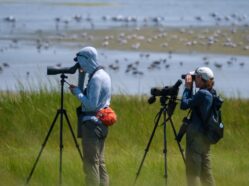The American Ornithological Society (AOS) names Christina P. Riehl as new Ornithology editor-in-chief
The American Ornithological Society (AOS) is pleased to announce Christina (Christie) P. Riehl as the new editor-in-chief for its top-ranked journal, Ornithology. Dr. Riehl is the first female editor of the journal in its 147-year history.



